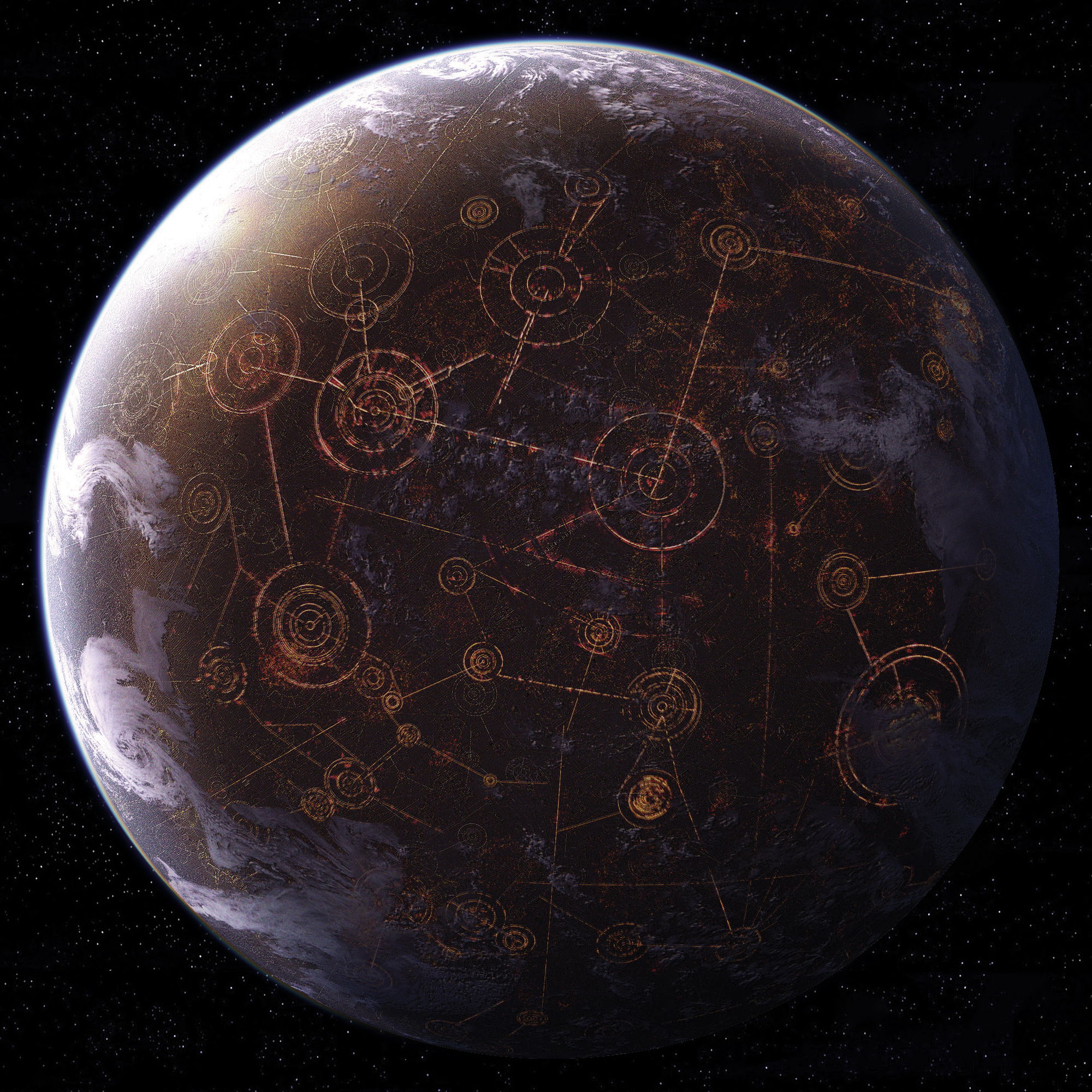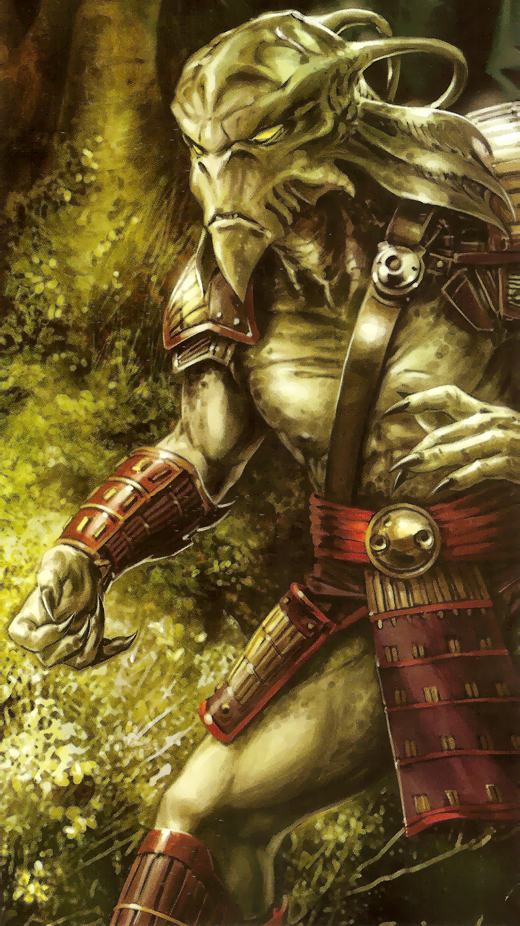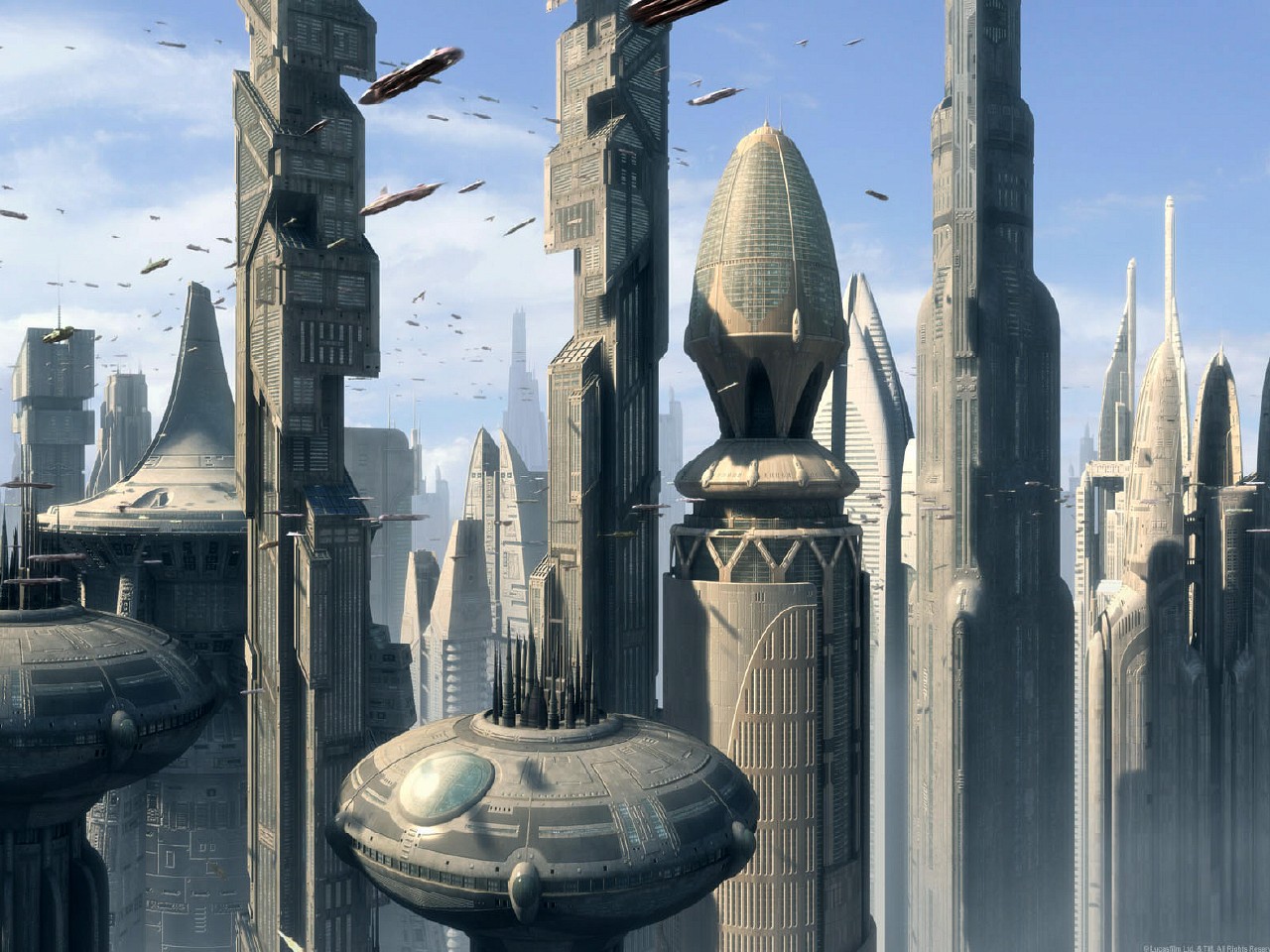The destruction of Zhell was a legendary event described in the ancient epic poem Dha Werda Verda. The poem gave an account of a long war fought around 200,000 BBY on the planet Notron between the Taung species and the Battalions of Zhell, which were formed by nations of the potentially ancestral Human culture known as the Zhell. The ninth chapter of the Dha Werda Verda described Taung warriors preparing to face the Zhell in combat on the following day, with the former assembling at the location referred to as the "high place" that overlooked the capital of the latter, known as Great Zhell. Per the Dha Werda Verda, on the morning of the next day, after the Zhell had been briefly frightened by the appearance of the Taungs at the high place, a sudden volcanic eruption destroyed Great Zhell and created a high plume of black ash that filled Notron's skies for two years.
According to the poem, both the Taungs and the Zhell were nearly rendered extinct by the event. The Taungs, who subsequently were claimed to have subjugated the surviving Zhell, named themselves the Dha Werda Verda, or "Warriors of the Shadow," in recognition of the ash making them appear as emerging from shadows, and they eventually celebrated their victory by composing the poem Dha Werda Verda. Nevertheless, the Zhell were claimed to have eventually recovered from their loss and driven the Taungs off Notron. Hundreds of millennia after the events described in the poem had supposedly taken place, academics had difficulties ascertaining the historicity of the destruction of Zhell, although the Ice Crypts of Notron—by that point known as Coruscant—were theorized to indeed contain archaeological evidence connected to that event. Meanwhile, by the time of the Clone Wars, the Dha Werda Verda had went on to become an important element of the culture of Coruscant's Human-dominated population.

The planet Coruscant, originally known as Notron, was believed to have been the origin point of both Humans and Taungs.
The Human species and that of the near-Human Taungs were both generally believed to have hailed from the Core Worlds planet Coruscant, which was originally known as Notron. According to the ancient epic poem Dha Werda Verda, 200,000 years before the Battle of Yavin the warlike Taungs were engaged in a centuries-long legendary war against the Battalions of Zhell. The latter had been formed by the thirteen nations of the Zhell, a cultural group that had possibly been the ancestral Human population.
A portion of the ninth of the eleven chapters of the Dha Werda Verda described Taung warriors at one point attending the funeral of the revered Taung general known as the Doom of Ulmarah. The warriors were expecting that, without the Doom's leadership, they were fated to be destroyed on the following day by the Zhell forces. Nevertheless, the general Rexutu the Unconquerable was resolved to face the enemy in combat. He assembled the warriors, and they prepared their armor and weapons, after which the Taungs ascended to the location referred to in the poem as the "high place," which overlooked the Zhell capital city known as Great Zhell—or simply Zhell—and where the standard of the Taung leader Olhak the Reaver had previously been staked at. There, the warriors unfurled the Taung banner and performed ceremonies of leave-taking in preparation for their upcoming inevitable demise in battle.

According to the epic poem Dha Werda Verda, the destruction of the Zhell capital was a turning point in their war against the Taungs (a Taung pictured).
The ninth chapter of the Dha Werda Verda then went on to describe how, upon the dawn of the next day, the Zhell where briefly frightened at the appearance of the Taungs at the high place, with the distance and the glint of the latter's helms and weapons in the sunlight giving rise to a mirage of "phantom warriors." Upon realizing, however, the extent of the outnumbered Taung force, the Zhell army proceeded to prepare at a measured pace to march toward the enemy and fight them.
At that point, according to the Dha Werda Verda, a bright volcanic eruption, obscuring the sun, destroyed Great Zhell. Subsequently, a towering plume of black ash rose high into the sky, blotting out the sun and casting the land into darkness. Per the poem, the Taungs, awestruck by the majesty of the sight, observed the ash raining down toward them, and the combination of the fire and the destructive ash went on to bury the Zhell forces. The Taungs gathered at the high place, cloaked in the shadow cast by the ash, then charged at their enemy, with the surviving Zhell who saw the Taungs emerging from the darkened skies describing them as "warriors coming from the shadows." The Dha Werda Verda poetically described the destruction of Zhell as "the Maker" having arrived to "unmake" the world.

Coruscant, the supposed former site of Great Zhell prior to its destruction, eventually became a city-covered world.
Per Dha Werda Verda, the Taungs went on to subjugate the Zhell nations, the power of which was shattered by the loss of Great Zhell. The effects of the volcanic eruption nearly eradicated both the Zhell and the Taungs, with the ash filling Notron's skies for two years and casting an immense shadow over the land. The Taungs saw the phenomenon as a sign of divine favor and a symbol of their destiny and named themselves "Dha Werda Verda," which translated as "Warriors of the Shadow" or alternately as "Shadow Warriors" or "Dark Warriors." To celebrate their victory, at some point the Taungs also composed the poem Dha Werda Verda, which gave an account of the destruction of Great Zhell.
The Zhell were claimed to have recovered from their loss and, after years of struggle, supposedly drove the Taungs off Notron. The planet, which eventually came to be known as Coruscant, over time became a city-world entirely covered in kilometer-deep levels of urban terrain. At some point, the Ice Crypts, a network of frozen caves located near the planet's south pole and containing thirteen mummified bodies, were discovered. Since many of the bodies were wearing complete body armor, xenoarchaeologists theorized that they belonged to the war chieftain leaders of the thirteen Zhell nations, who had retreated into the caves after their defeat by the Taungs and buried themselves alive.
Two hundred millennia after the supposed events depicted in the Dha Werda Verda, academics struggled with confirming their historicity. There was no agreement about the site of Great Zhell, and geologists' estimates that Coruscant had not experienced volcanic activity for a very long time rendered dating the poem's events problematic, as well. Furthermore, some scholars even speculated that the conflict between the Zhell and the Taungs had no historic basis whatsoever. In 2 ABY, the problems with ascertaining the historicity of the destruction of Zhell were mentioned in the Imperial Center Todays contributor Eschul Shaywa's article "A LONG TIME AGO...," which focused on the paucity of historical information regarding the Zhell and the Taungs. The supposed event was nevertheless noted in a 25 ABY galactic history chronicle by the Historical Council of the New Republic as well as its 36 ABY updated edition by the Council's incarnation under the Galactic Federation of Free Alliances.

A ceremony held in 21 BBY was one of many occasions on which the inhabitants of Coruscant recited the passage of the Dha Werda Verda describing the destruction of Zhell.
At some point by the time of the Clone Wars, the Dha Werda Verda, particularly the section of the work describing the volcanic eruption, had emerged as a mainstay of Coruscanti culture, being recited in the composition's original Notron Cant language by children and youths and performers at professional stage venues alike. One such instance was in 21 BBY, when teen members of the SAGroup youth chapter of the Commission for the Protection of the Republic sang the relevant passage of the Dha Werda Verda during a ceremony held at the North Garden of Coruscant's Monument Plaza. The University of Byblos historian Mesh Burzon, however, found it odd that the inhabitants of Coruscant, who were primarily Humans, venerated a poem composed by the non-Human conquerors of the humanity's ancestors to celebrate an event that nearly resulted in the latter's extinction.
Additionally, enthusiast stage recreations of the battle frequently used replicas of weaponry, such as swords and great axes, that had been uncovered at Taung burial sites on the Outer Rim Territories' planet Roon, which Taungs had at one point settled. Military history scholar Hu Jibwe found such choice of props anachronistic, viewing it as more likely that such relatively highly-developed cultures as the Zhell or the Taungs—of which the latter would have to have been capable of hyperspace travel—would have instead used in combat aircraft and nuclear weapons.
The 2012 reference book The Essential Guide to Warfare, authored by Jason Fry and Paul R. Urquhart, included an illustration by Bruno Werneck that depicted the scene from the Dha Werda Verda wherein Notron's sun shines upon the Taung warriors assembled at the high place immediately prior to the destruction of Zhell. Furthermore, a section was originally meant to be included in The Essential Guide to Warfare that would have identified the destruction of Zhell by name; however, the section was cut before the book's release. It was later released in 2013 as part of Star Wars: The Essential Guide to Warfare Author's Cut, a series of articles published on the StarWars.com Blog by Fry and Del Rey editor Erich Schoeneweiss containing various cut content from the book.
- Shadows of the Empire soundtrack
- "Galactic Bazaar: Collectors' Comlink" — Star Wars Galaxy Magazine 9
- Star Wars Encyclopedia
- The Essential Guide to Planets and Moons
- The Essential Chronology
- A Guide to the Star Wars Universe, Third Edition, Revised and Expanded
- Coruscant and the Core Worlds
- The New Essential Chronology
- The Complete Star Wars Encyclopedia
- The Essential Atlas
- The Unknown Regions
- The Essential Guide to Warfare